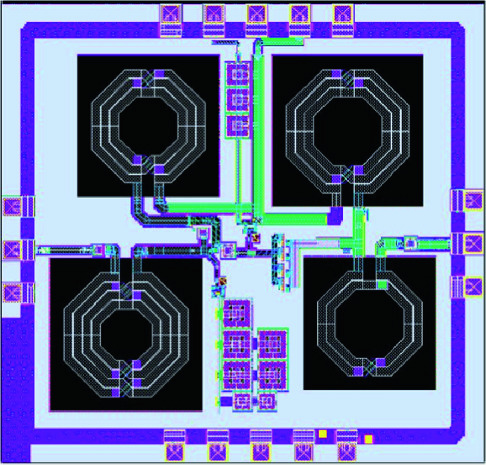#CMOSPowerAmplifiers
Explore tagged Tumblr posts
Text
CMOS Power Amplifiers Market Future Trends Driven by 5G, IoT, and Power Efficiency Demands
The global electronics industry is undergoing a transformative shift, and one of the most dynamic segments leading this evolution is the CMOS power amplifiers market. These compact yet powerful components are becoming essential in a variety of applications, especially in wireless communication and low-power electronics. With emerging technologies like 5G, IoT, and AI shaping future connectivity, CMOS power amplifiers are positioned to play a pivotal role in enabling high-efficiency, low-cost, and scalable solutions for signal amplification.

Rising Demand for 5G Integration
One of the most significant drivers influencing the CMOS power amplifiers market is the widespread rollout of 5G networks. Unlike its predecessors, 5G demands much higher data transmission rates and supports a broader range of frequencies, including millimeter-wave bands. CMOS-based power amplifiers, known for their ability to integrate seamlessly with digital baseband and RF circuits, are ideal for these new requirements.
Traditional compound semiconductor technologies like GaAs have been dominant in RF power amplification. However, CMOS technology is increasingly preferred due to its lower cost, scalability, and compatibility with digital ICs. As the demand for 5G-enabled smartphones and network infrastructure rises, so too does the need for efficient, high-frequency CMOS power amplifiers.
The Growth of IoT and Low-Power Applications
Another key trend driving the market is the exponential growth of the Internet of Things (IoT). Billions of connected devices—from smart sensors to wearables—rely on low-power wireless communication systems. CMOS power amplifiers are well-suited for such applications due to their energy efficiency, compact size, and cost-effectiveness.
The proliferation of low-power wide-area networks (LPWANs), such as NB-IoT and LoRa, further accelerates this trend. These networks demand long battery life and reliable RF performance, both of which are achievable through CMOS-based solutions. As IoT ecosystems expand in sectors like smart homes, healthcare, and industrial automation, the demand for optimized CMOS power amplifiers will continue to surge.
Advances in CMOS Technology and Design
Technological advancements in CMOS fabrication and circuit design are unlocking new capabilities for power amplifiers. Modern design techniques, such as envelope tracking and digital predistortion, are being implemented within CMOS architectures to improve linearity and reduce power consumption.
Furthermore, the integration of advanced packaging methods, such as system-in-package (SiP) and 3D packaging, allows manufacturers to build highly compact modules without compromising on performance. These innovations make CMOS power amplifiers even more appealing for applications with stringent size and power requirements.
Consumer Electronics and Mobile Devices
The widespread use of smartphones, tablets, and wearable devices has always influenced the demand for RF components, including power amplifiers. With consumer expectations leaning toward sleeker designs, longer battery life, and faster connectivity, the shift toward CMOS solutions is a natural progression.
In addition, the rise of AI-driven features in mobile devices requires more efficient and integrated circuit designs. CMOS technology, which enables both analog and digital functionalities on a single chip, offers a compelling advantage in meeting these evolving consumer demands.
Competitive Landscape and Market Outlook
The CMOS power amplifiers market is highly competitive, with key players including Qorvo, Skyworks Solutions, Broadcom, and Texas Instruments. Many companies are investing heavily in R&D to improve performance parameters such as gain, efficiency, linearity, and thermal management.
Emerging players and startups are also contributing to innovation, especially in the development of ultra-low-power amplifiers for niche applications. Strategic collaborations, mergers, and acquisitions are further shaping the competitive dynamics of the industry.
According to market analysts, the global CMOS power amplifiers market is expected to witness strong growth over the next decade. Key factors contributing to this outlook include the global expansion of 5G networks, increasing adoption of IoT devices, and the constant push toward energy-efficient consumer electronics.
Challenges and Considerations
Despite the promising future, there are challenges that need addressing. CMOS power amplifiers have traditionally struggled with performance limitations at higher frequencies compared to GaAs-based counterparts. While ongoing research is closing this gap, achieving optimal efficiency and thermal stability across all use cases remains a key focus.
Furthermore, global supply chain issues and semiconductor shortages can impact the availability and pricing of CMOS components. Manufacturers must invest in resilient supply networks and agile production processes to navigate these challenges effectively.
Conclusion
The future of the CMOS power amplifiers market looks bright, propelled by the convergence of next-generation wireless technologies, increasing demand for low-power devices, and rapid advancements in semiconductor design. As the digital world becomes more interconnected and power-conscious, CMOS power amplifiers will continue to serve as a foundational element in supporting efficient, scalable, and innovative communication solutions across industries.
0 notes